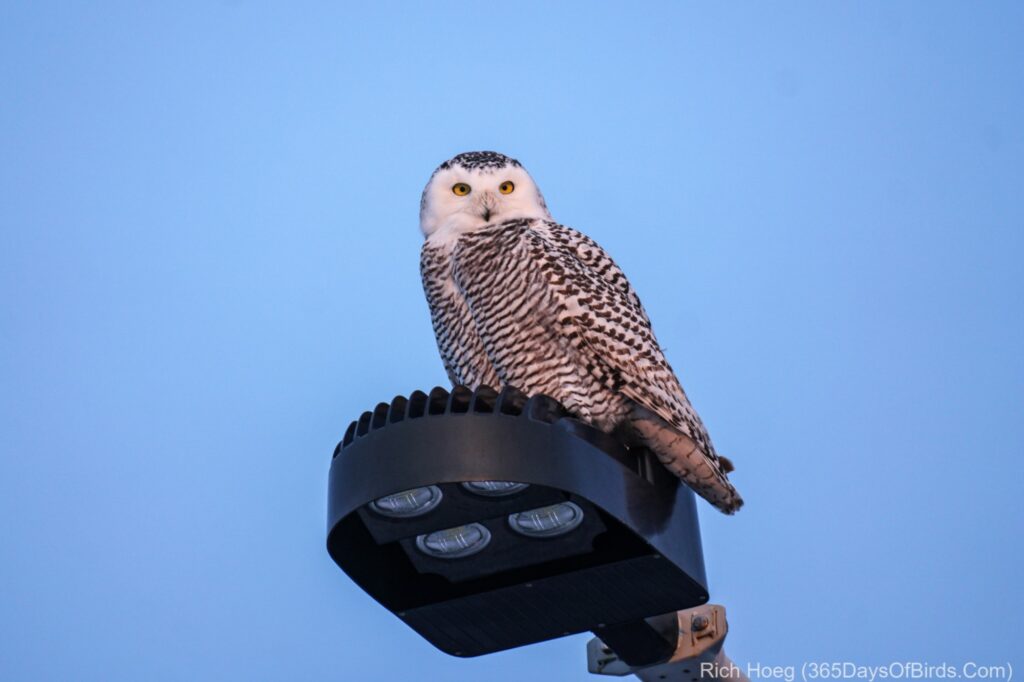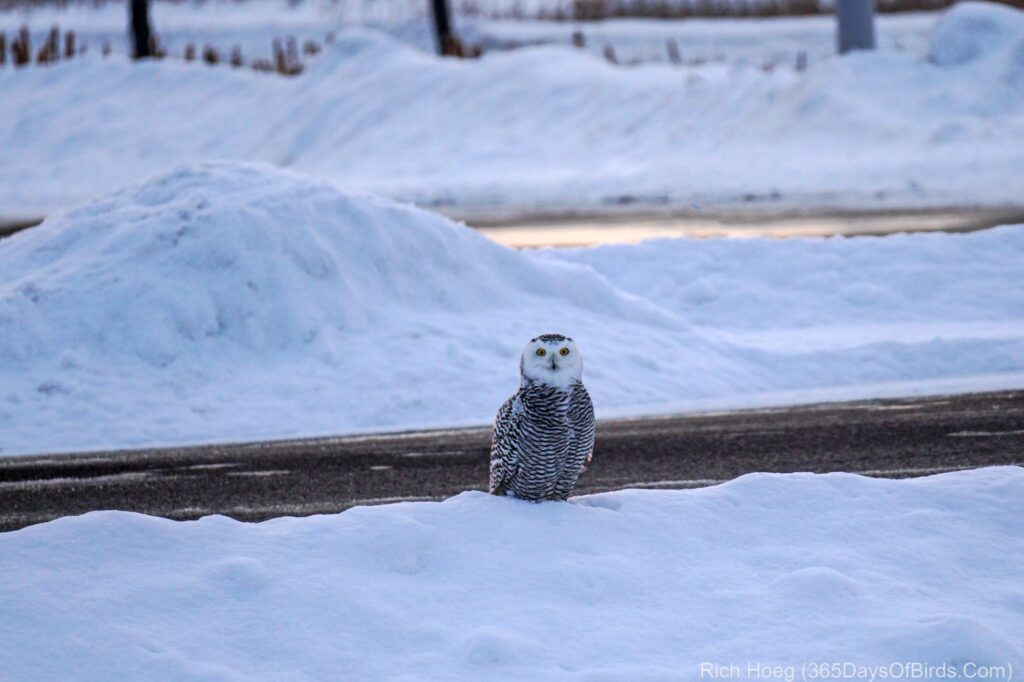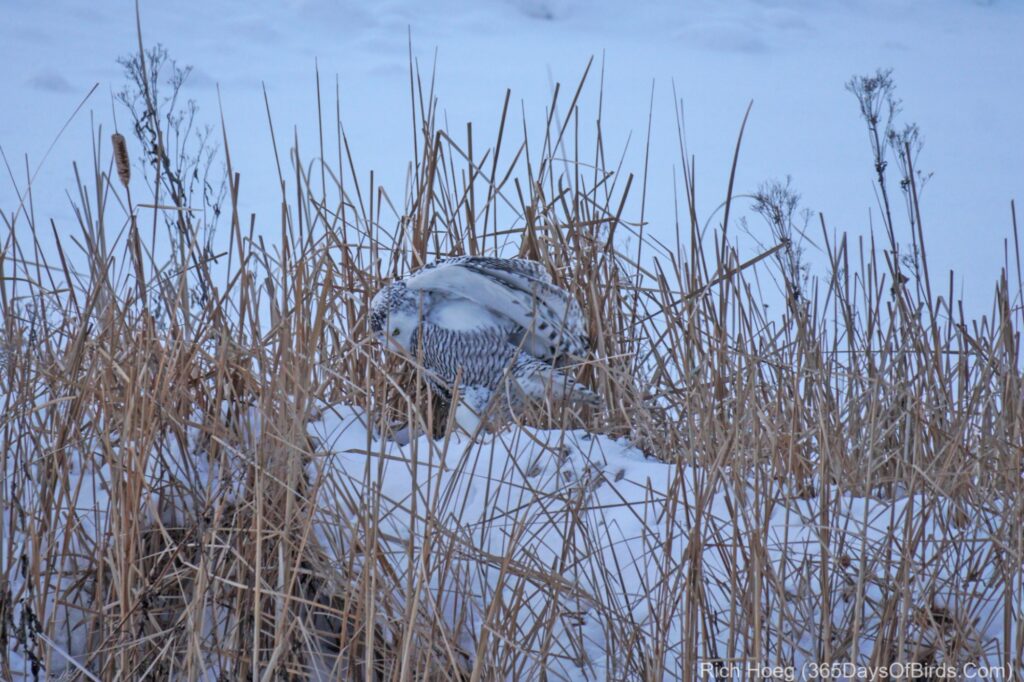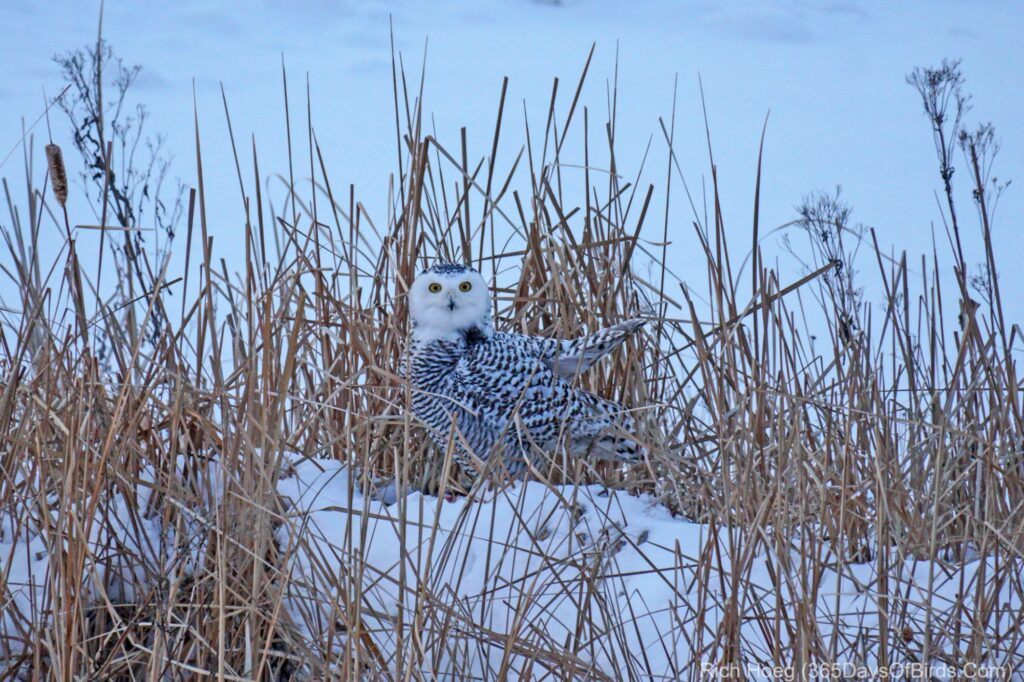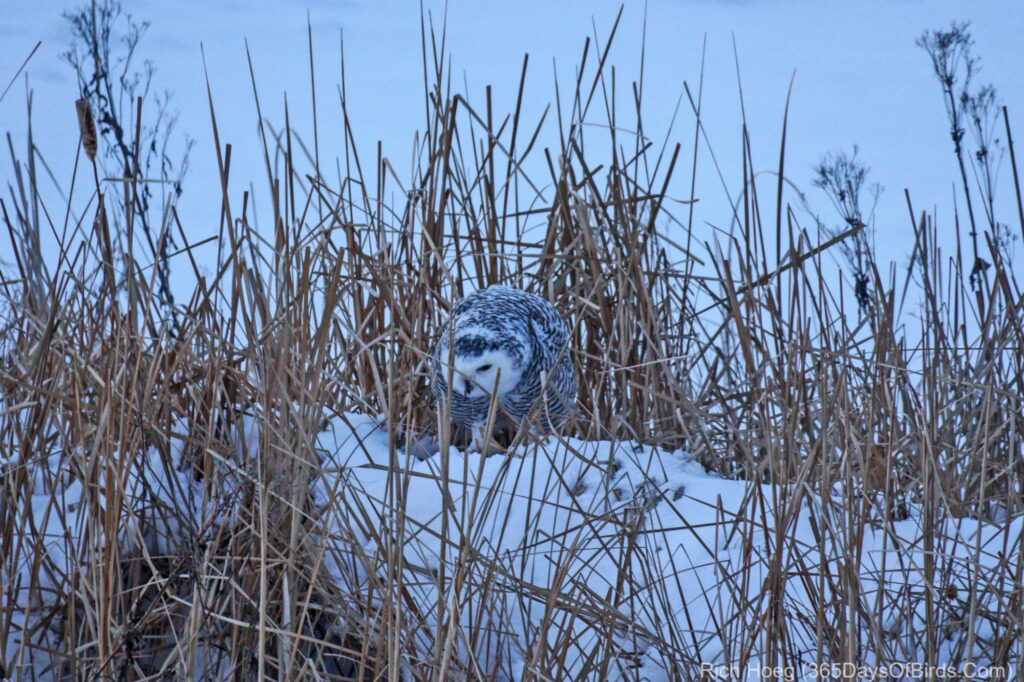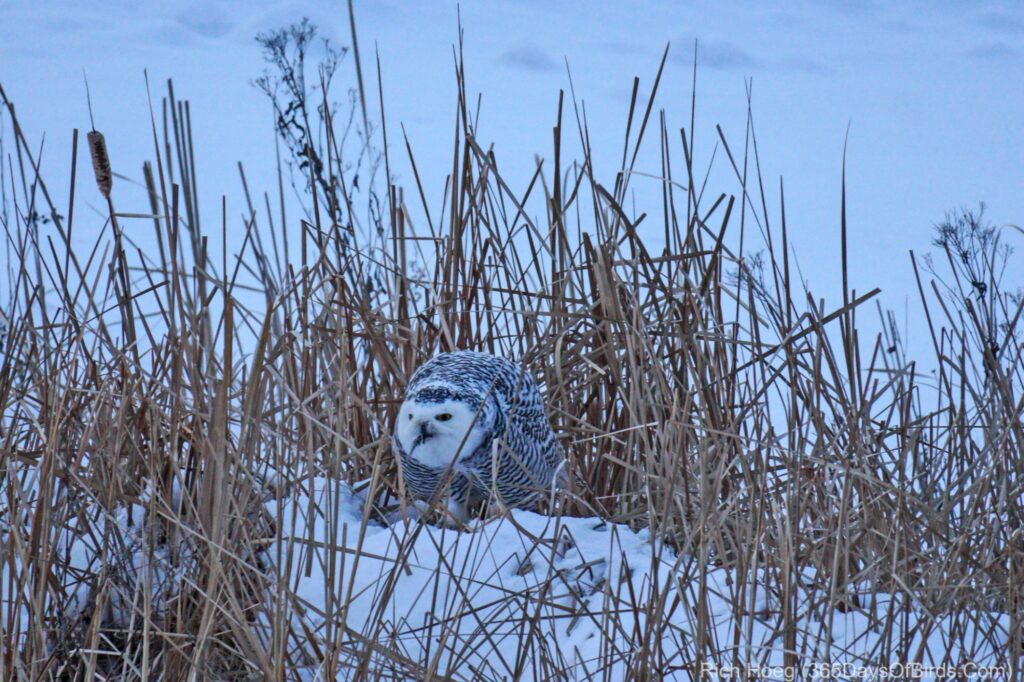It was a great early evening for education! Classes are back in session at the Superior Middle School, and one of our winter visitors, a female Snowy Owl, decided to put on an educational show at sunset. It was fun talking to various teaches, explaining facts about Snowys, as the owl began its evening hunt. This post is not only for my regular readers, but also for the kids at Superior Middle School. Enjoy!
Last night’s owl on a light pole near the front door of the school.
Every winter the Duluth / Superior area is visited by Snowy Owls. These birds migrate down from their summer breeding grounds on the tundra near the Arctic Ocean. Most of the birds that winter on the Arctic Riviera (i.e. here!) are immature birds three years old or younger. These owls are not yet proficient hunters, and our “mild winters” are easier than up north in the Arctic! Mature Snowys actually stay north, through the long 2 month long period when the sun never rises, hunting in the dark (primarily sea ducks and lemmings). In fact Snowy Owls are known to enjoy ice rafts (miniature ice bergs). They will spend days hanging out, drifting on the ice, with short flights to catch unsuspecting sea ducks.
Snowy Owls arrive at the Head of the Lakes normally between December 1st and the first week of January. During “irruption” years Snowys arrive as early as November 1st. The Snowys stick around till early March. From this time forward the owls make “short flights” (50 to 100 miles per night) around the region as they strengthen their wing muscles for the upcoming trek north. By the 1st of April most Snowys are migrating north.
During January and February Snowys establish winter hunting territories, and will defend that area from other raptors, including Snowys. The Middle School bird has chosen your building as a good hunting spot. Its proximity to the airport, fairgrounds, industrial area, and train yards make for good hunting. In fact, all this open land (fewer trees) reminds the owls of the tundra. The Duluth / Superior Area is one of the first regions these Snowys reach during their southern migration through the Boreal Forest. Snowy Owls hunt by sight, and prefer wide open spaces like the tundra (no trees). They will not survive as hunters in the forest.
Female and immature males, which spend more time of the ground than mature males, have black feather bands. This camouflage feature allows them to better blend in against the tundra. During the nesting season females do all the incubating / brooding, and males do all the hunting till the young are able to walk around a bit on their own. Mature males are almost pure white which helps them blend in against the snow and clouds, a useful feature when hunting. A few weeks ago I watched a mature male near Sax-Zim Bog. Browse to this post to see more images of a male. You will be able to compare against this female.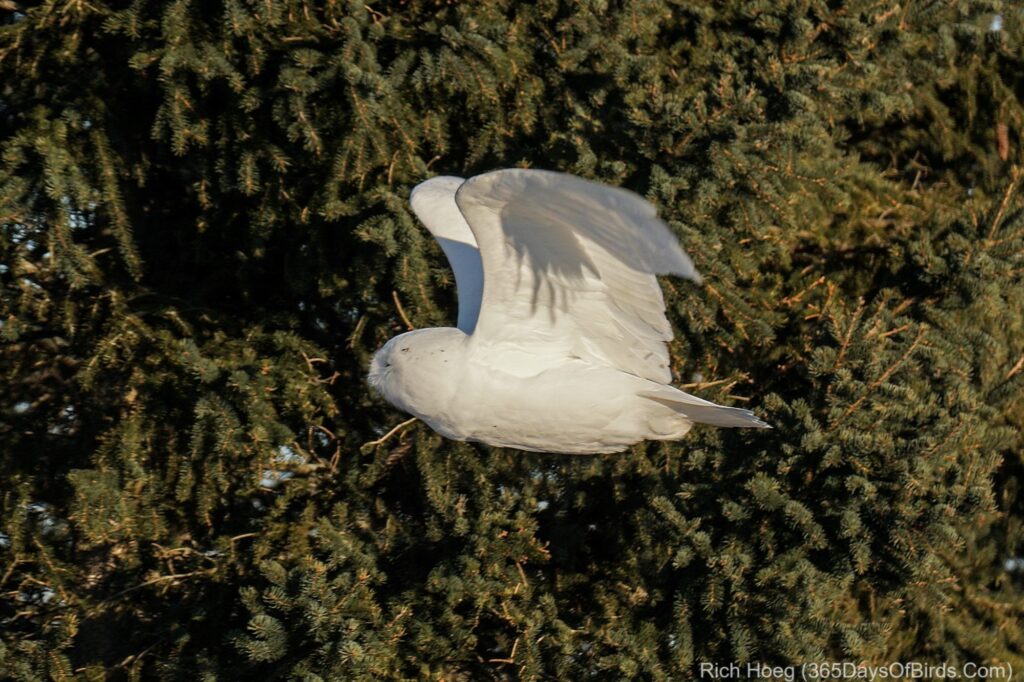
Here is a photo I took of the Middle School Snowy about one week ago. Compare the differences (see the blog post with more flight images)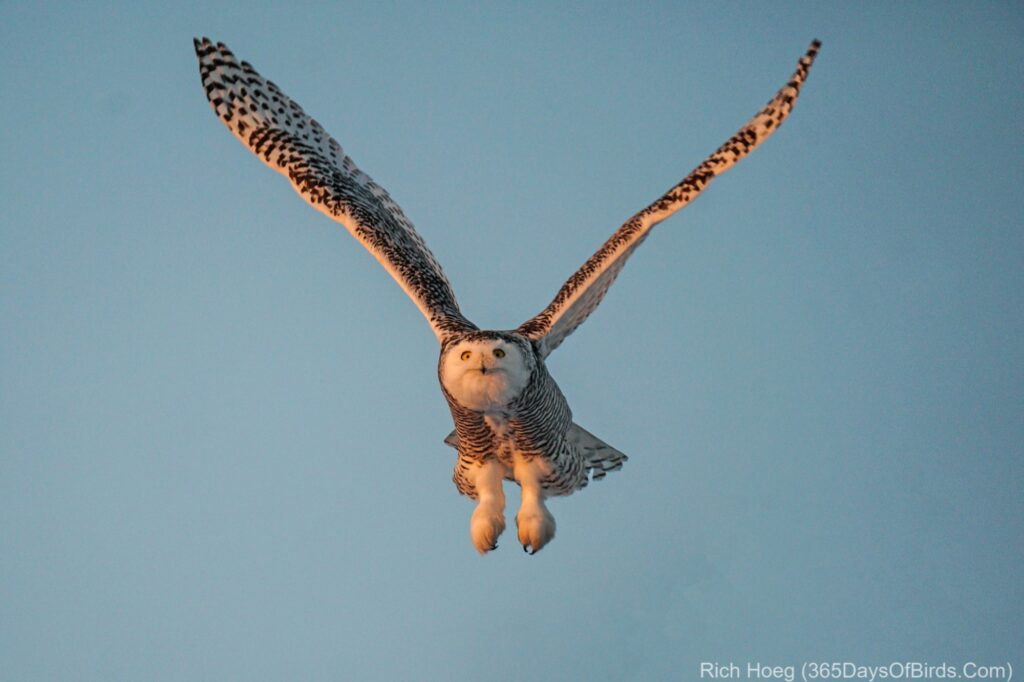
One of yesterday’s highlights was seeing your Snowy make a successful kill in the small wetland just in front of the school. I hope you enjoy the pictures of Snowy having its supper. I’m not certain what it caught, but definitely something larger than a mouse or vole.
Snowy on the Hunt!
Video (link for email subscribers)
Snowy Owls will prey upon ducks and mammals as large as rabbits. By weight Snowy Owls are one of the largest owls in the world. Many owls are native to our region. Just north of Duluth Great Gray Owls roam the forest bogs (learn more via an earlier post). I am actually a volunteer naturalist at Sax-Zim Bog 40 miles north of Duluth. Via this post I grant the staff and students of the Superior Middle School a non commercial license to use any content (writings, images, and / or videos) found on my blog without charge, but credit is required back to me and my web site in the following manner: Rich Hoeg (365DaysofBirds.Com) (must include my name and an active link when online and include my name and web address as text when offline).
In summation, here are two of my favorite Snowy Owl research organizations. I am also a donor to these organizations:
- Project SnowStorm (bands Snowys with GPS, solar array power tags)
- Owl Research Institute (researches Snowys up in the Arctic breeding gounds)
Finally, I am also an children’s book author! Would you like a free full version PDF download of my book: Snowy’s Search for Color? Follow this link. This book was a finalist for the University of Minnesota’s Northeastern Minnesota Book Award. All the Snowy Owls featured in this book were photographed in Superior or NE Minnesota.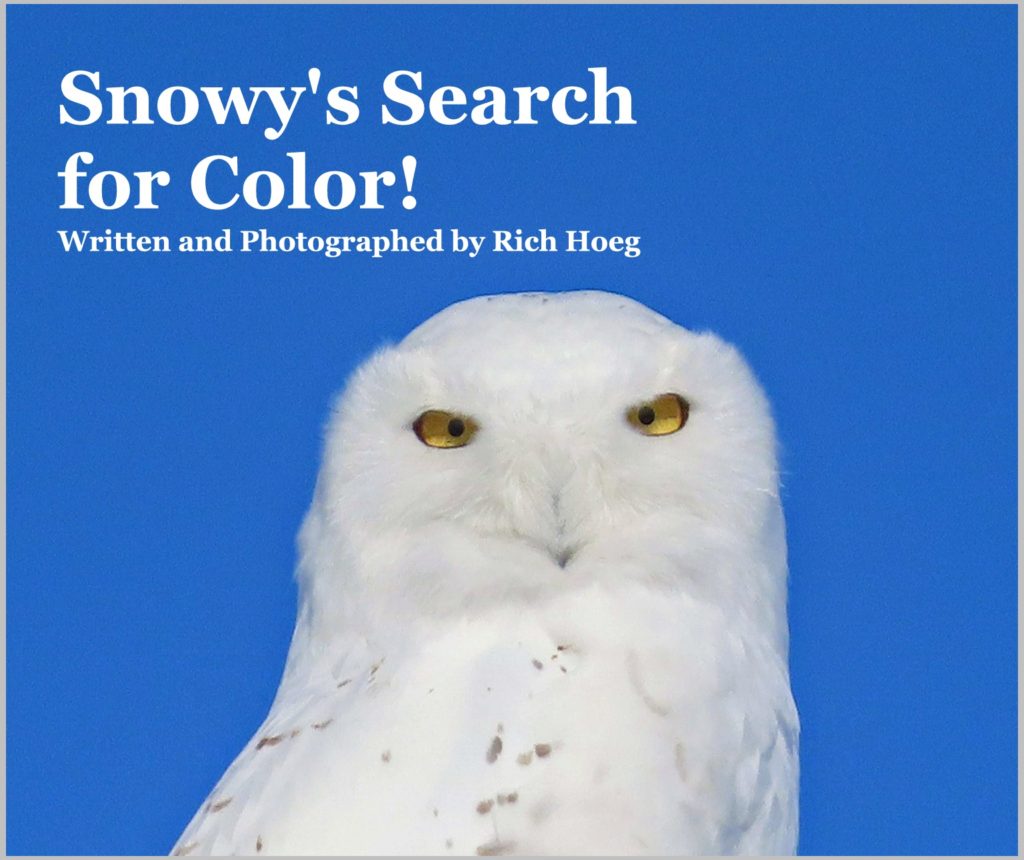
My latest book, Do You Hoot?, follow the early lives of thee Great Horned Owlets which grew up near my house at the northern edge of Duluth last Winter / Spring / Summer. A free PDF download is also available. Use this link.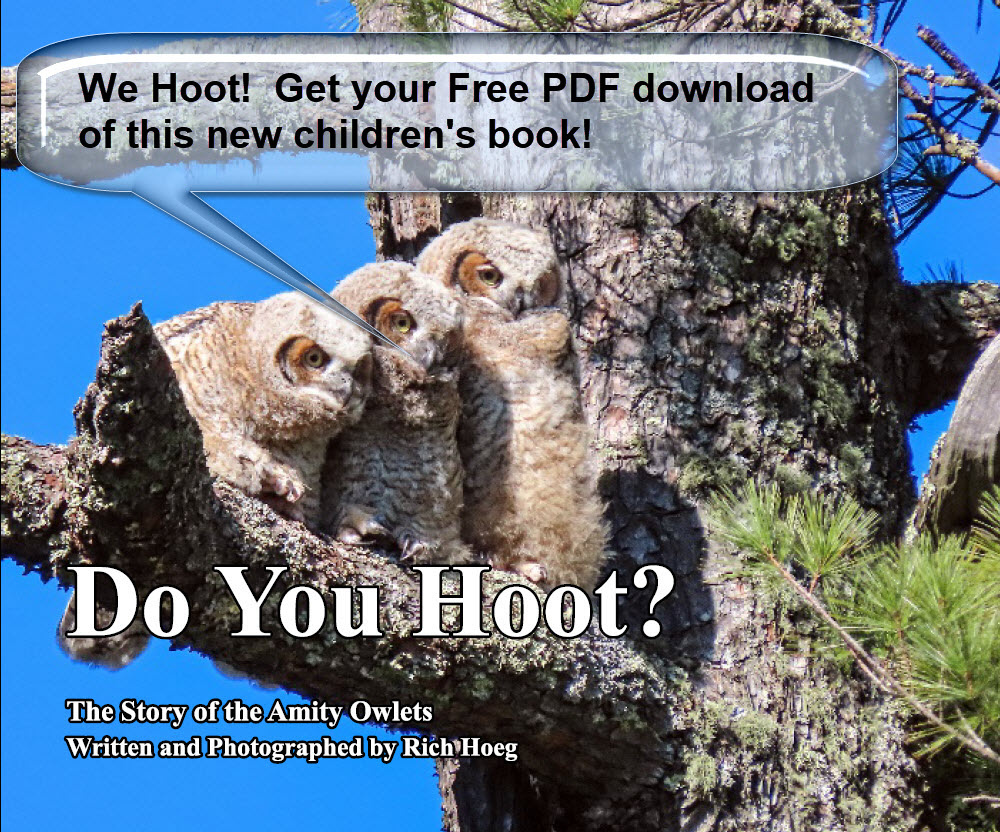
Discover more from 365 Days of Birds
Subscribe to get the latest posts sent to your email.
